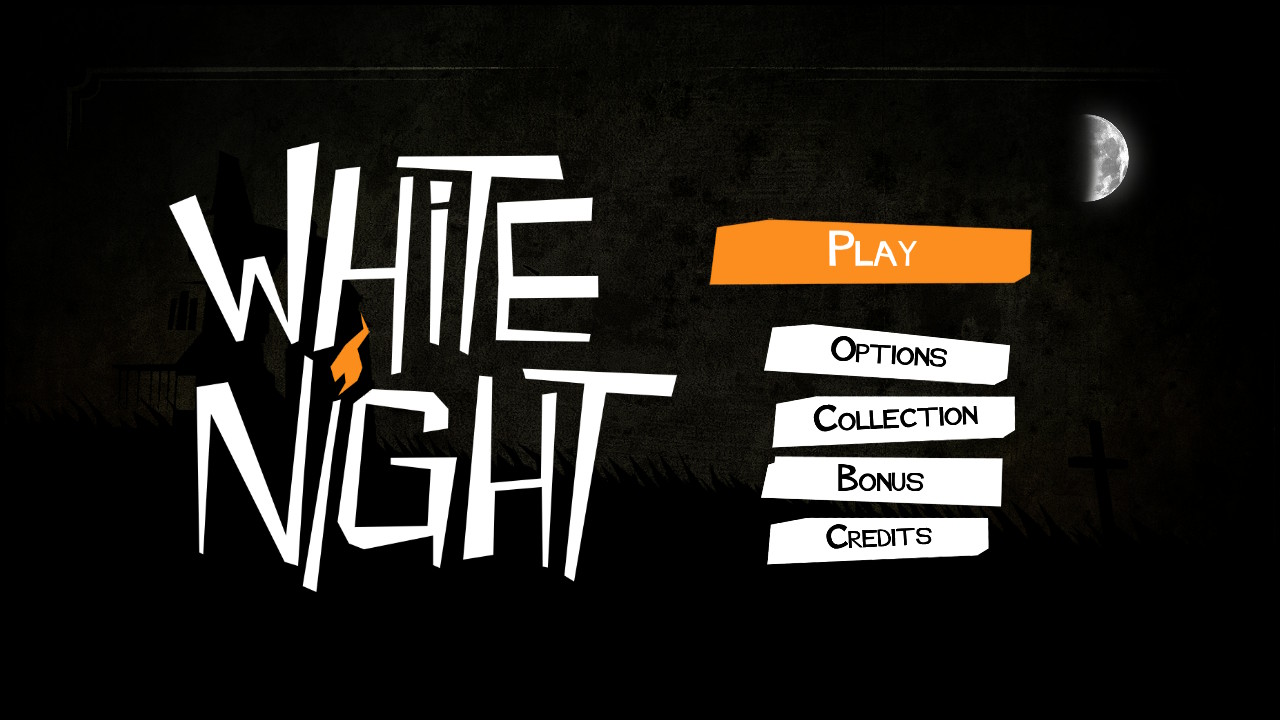[Review] White Night – Nintendo Switch
White Night
Nintendo Switch
Developed By: Osome Studio
Published By: Plug In Digital
Music By: Zachary Miskin (composer), Elsa Quignard (assistant composer)
Category: Adventure, Puzzle, Survival Horror
Release Date: 5.17.18
I remember the first time I booted up the Resident Evil Director’s Cut disc on the PSX. Creepy, gory, and original, it made me a lifelong fan of survival horror. When I first saw White Night for the Nintendo Switch, I was intrigued by the concept and had high hopes that it would be a compelling throwback to the origins of the genre. It does a pretty good job of capturing the feel of the early Resident Evil games, with a few modifications.
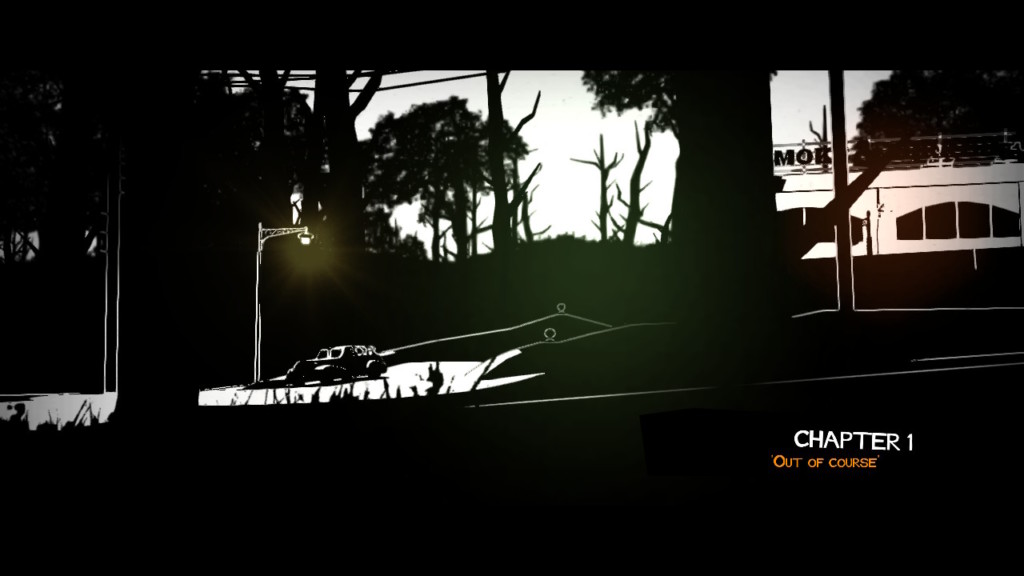
Story
It’s the late 1930’s; the Great Depression is fully underway in the United States, and hopelessness abounds. Driving home after a night of sad drinking, the protagonist (unnamed) swerves to avoid a woman who jumps in front of his car and runs off the road. He is shaken and possibly injured, or at the very least he can’t walk straight, and the woman he thought he hit is nowhere to be found. Luckily, a dilapidated mansion is nearby for him to enter and try and call for help. Unluckily, the mansion is abandoned and the phone inside just makes creepy death noises. Way more unluckily, it’s not totally abandoned; there are ghosts all over the dang place and they’ve locked the door so our hard-boiled protagonist can’t get out. His only option is to delve deeper into the house and its mysteries.
Without too many spoilers, the mansion belongs (or belonged?) to the Vespers, a wealthy family that has fallen on hard times in the Depression. The stories of the various family members (father Henry, mother Margaret, and son William) are fleshed out in journal entries, photographs, and newspaper clippings scattered about the house. These items paint a picture of a family that had been headed for ruin long before the Depression arrived to finish them off. Repressive religious expectations, syphilis, marital infidelity, classism, and a smidge of ritual murder highlight an engaging and horrifying story of a family’s slow descent into madness and death.
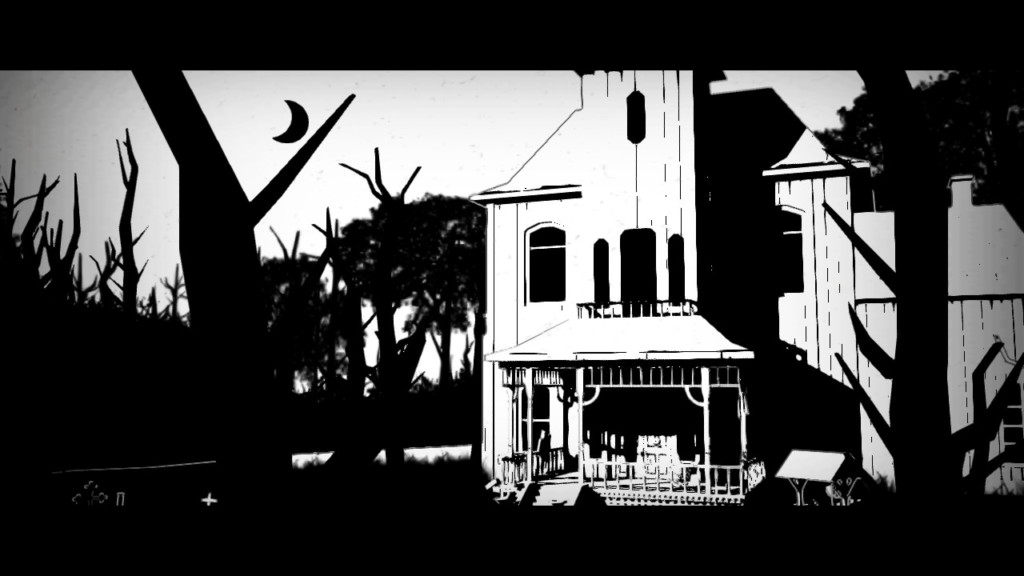
Gameplay
As I said earlier, Resident Evil is a pretty big influence on White Night in a lot of ways. The third-person perspective of the game is the most immediately noticeable. The camera is also fixed, like the classic REs, but thankfully you won’t have to endure the tank control scheme. Darkness in all its forms in a major theme of the game, and that carries through the visuals and gameplay as well; the mansion is mostly pitch black.
The player can find matches throughout the house, which he uses to create small areas of light to investigate his surroundings. The matches burn out eventually, so a new one must be struck. Players are limited to carrying twelve matches at a time, for some reason. I mean, they’re matches; why only twelve? The guy’s got pockets everywhere; he can fit more, and he knows he’s in a spooky mansion without a lot of light, so why is he so stingy with the matches? It doesn’t make a lot of sense from a practical perspective; I get why it’s that way from a gameplay standpoint, but every time a match went out and I was low on matches I cursed profusely and made my way back to where I had left some matches behind previously. It padded playtime and derailed some of the game’s atmosphere. Also, sometimes a match won’t strike so you just lose a match and still have no light. You can just strike up another one, but it kind of sucks to randomly lose resources for no reason in a game that relies on resource conservation as one of its key strategic elements.
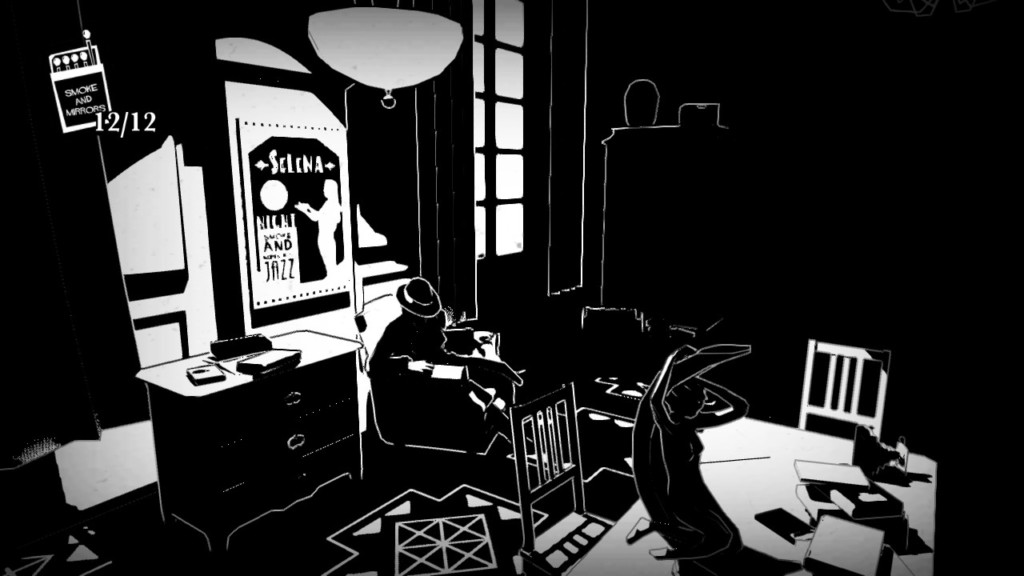
Despite the dilapidated nature of the mansion, however, some of the lights still work. Turning them on will illuminate part of a room and is the only way to defeat the ghosts that appear throughout the house. Turning a light on is usually the main way to advance the story and/or solve a puzzle; lights usually reveal hidden items or get ghosts away from a door you need to go through next. Sometimes you need to get a light on to use both your hands to move something or open a heavy chest lid. The point is, light is your best friend. Get as much of it as you can.
As you illuminate sections of the mansion, approaching objects that can be interacted with will cause an icon to appear in the upper right corner of the screen. There are different icons for different actions, like a magnifying glass for inspecting an object or a light bulb if there’s a light that can be turned on. Certain items can be collected and used in other areas of the mansion to solve puzzles and open new paths. If this just sounds like Resident Evil without the combat… you’re right, but I could never hit my word count if I just said that, now could I?
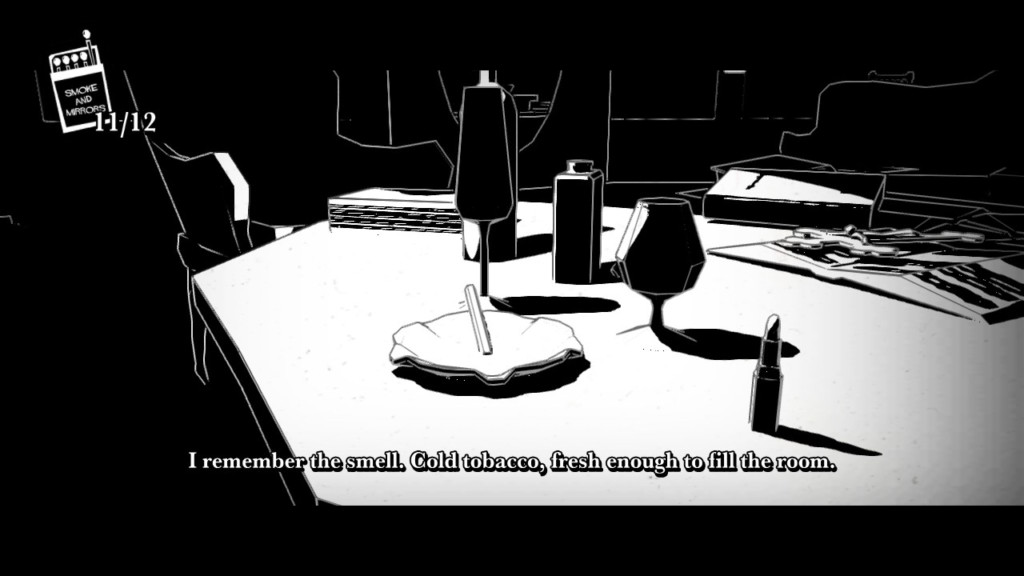
Graphics
White Night is an apt name for the game’s appearance, which is mostly black and white; not even gray, just sharp black and bright white. It makes for a very visually arresting aesthetic; the stark blackness of the protagonist’s surroundings does a lot of the heavy lifting in building the game’s creepy atmosphere and ensures that it doesn’t fall into the common horror genre trap of valuing gore over ambience. If there is no red, you can’t just slather everything in blood and guts and call it a day, you actually have to build something unsettling. Not that there’s any lack of blood, but it’s not a crutch; case in point, there are stains all along the floor when the player first enters the mansion, as well as a pair of muddy boots. You also encounter some dead bodies and at one point a bathtub full of blood. Whenever you encounter splotches on the floor in a new area, you have to ask yourself what you’re standing on. It’s an unsettling feeling, and just one example of the small details that make the visuals of White Night so compelling.
There is some color to be found, however. Different sources of light have different colors. Fire, for example, gives off an orange glow. Certain especially bright bulbs give off a blue-green aura. Highlighting light sources with the only use of color in the game serves to amplify the power of light against the sinister forces at work in the house. I just wish more light switches worked. White Night is not a good advertisement for the wiring in old New England houses.
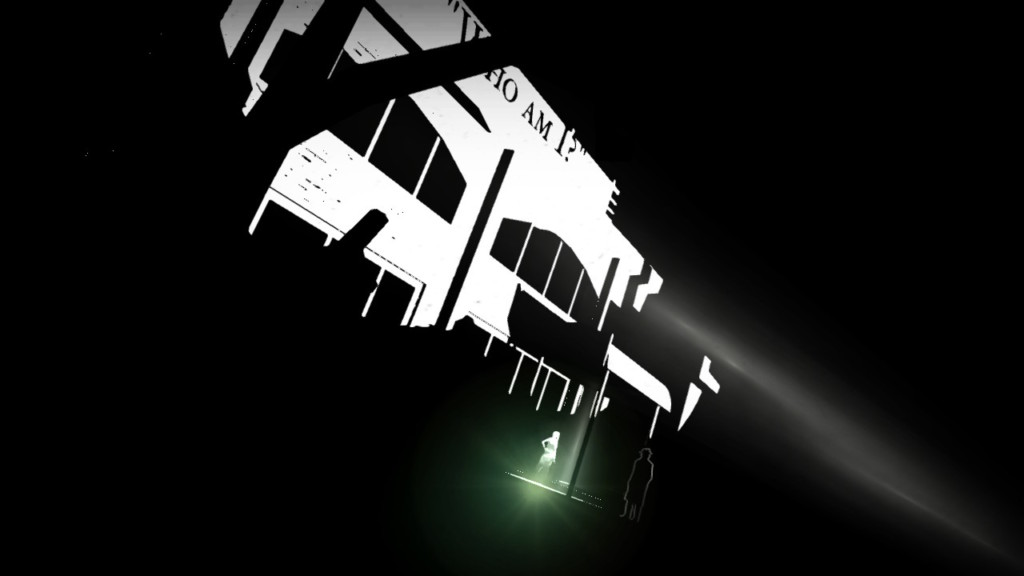
Sound
The auditory experience is more of a mixed bag. The theme song, played throughout the game at important junctures, is a smooth jazz melody with smoky, sweet vocals. It captures the melancholy mood of the game perfectly, as does the sinister background music simmering through most of the game. Unfortunately, there are a lot of annoying sounds in the game. From ticking clocks to ungodly loud wind chimes, there are repeated background noises that overpower everything else going on. They drove me mad in the bad way; they really just made me want to stop playing every once in a while because they just grated on my ears so much. I didn’t quit because of how solid everything else about the game is, but I often wanted to.
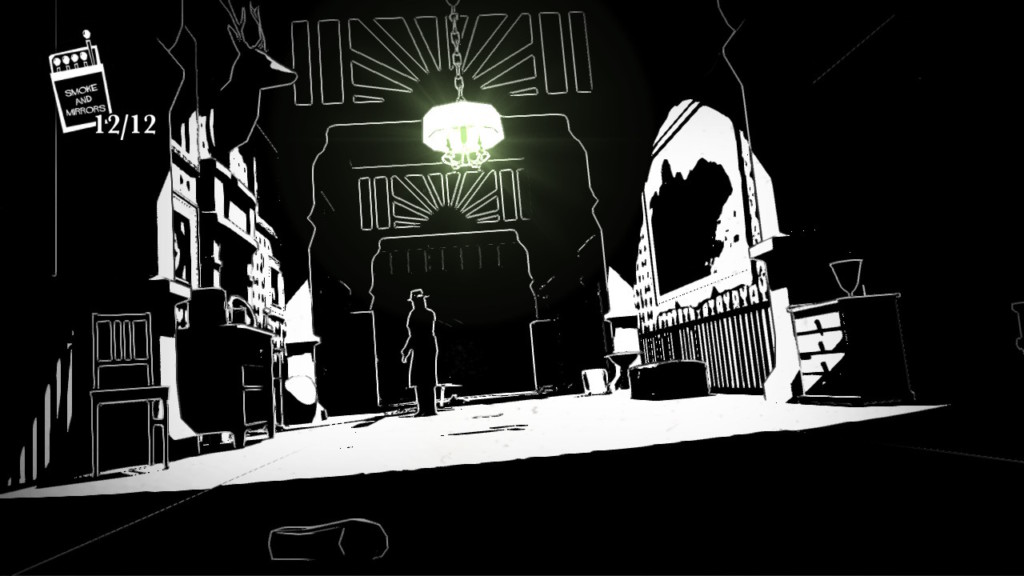
Technical Difficulties
While I generally very much enjoyed my time with White Night, I would be remiss if I didn’t point out a few issues I encountered during the game. First of all, the load times could sometimes be long. I would expect this when advancing to new areas, as from outside the mansion to in; it’s not an open world game, so some load time between these areas is fine. However, sometimes the game would hang up while it was loading a new camera angle in the same area. It really broke immersion when I would just be walking to a different corner of the room and the game would freeze for up to 30 seconds before switching to the new camera. In addition, the game froze on me completely four times; twice after I had died and the screen asking whether I wanted to go back to the main menu or continue from the last save came up, once during a load screen for an area transition, and once during a camera transition.

Playability
White Night has no motion or touch controls, so it can be played either docked or undocked according to your preference. I liked it a lot better on my TV; the Switch’s screen made everything look too cramped and the heavy use of black increased the effect of any glare I got dramatically. My TV just made up for it better. Plus, the larger screen let me see all of the detail put into the backgrounds more clearly and made it easier to see small objects that I might be able to interact with. So I guess for this one I recommend playing it docked for a better experience.
TL;DR: Moody, stylized, and engaging survival horror experience. Like early Resident Evil games without the combat.





Buy White Night
$14.99
Follow Osome Studio

Follow Plug In Digital


